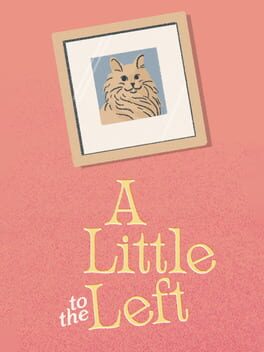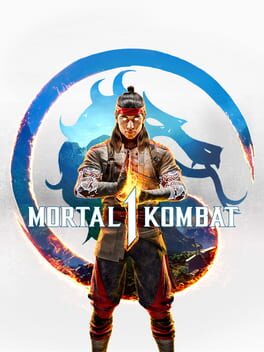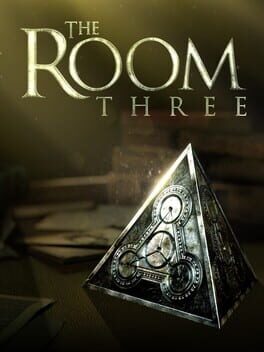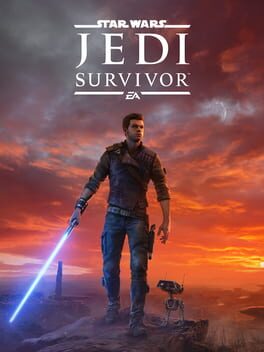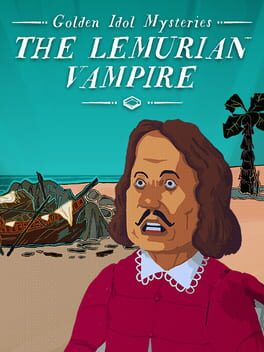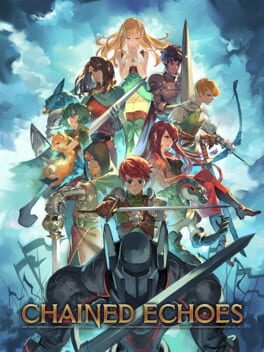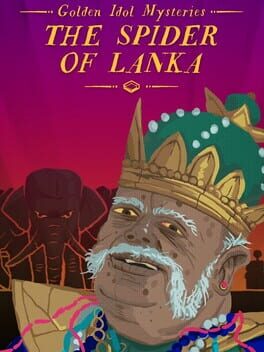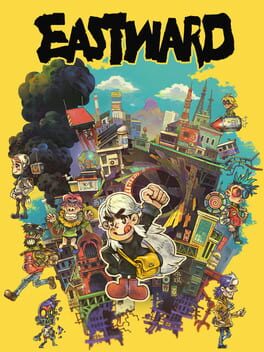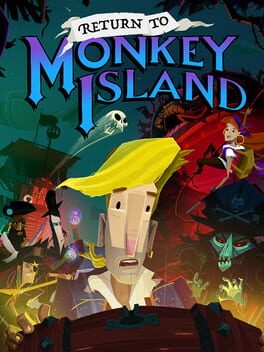Patteca
2022
Cute tidying puzzles, but even as short as it is there’s more levels than they had good ideas and a few of the later ones have that especially annoying flaw of “I know what the answer is but I’m not sure why you’re not recognizing it.” The cat stuff ended up feeling more like a bolted-on thing for marketing than being integral to the game.
2023
I played this as a single player game, which likely isn’t how it’ll be experienced by its biggest fans, but it’s still a fun time outside of the online versus mode. The moves feel easy enough to pick up and satisfying to pull off, and there’s apparent depth for anyone interested.
Visually, this is by far the most high fidelity fighting game I’ve ever played, with environments and character designs that are richly detailed in addition to often looking photorealistic. The facial animation in the “kampaign” cinematics is astounding, though the performances are mostly amateur enough that capturing every little nuance is often more distracting than affecting.
The plot is nostalgically reconstructing the backstory of the early games (again), especially MK2 and 3, and that’s entertaining for a while, if also long-winded. Eventually, though, it collapses into the same halfhearted gesturing at multiverse nonsense that so many big branded stories default to right now. The dialogue is also generally bad, not just in a hammy way, but in an “I can finish half the lines myself because they’re that tired and recycled” way.
Beyond the story mode, there’s the usual arcade tower with character endings, plus a time-sink seasons mode that seems like an okay carrot to keep solo players interested but also way too much of a service game/MTX store grind to grab me more than the couple of intro hours I tried.
Visually, this is by far the most high fidelity fighting game I’ve ever played, with environments and character designs that are richly detailed in addition to often looking photorealistic. The facial animation in the “kampaign” cinematics is astounding, though the performances are mostly amateur enough that capturing every little nuance is often more distracting than affecting.
The plot is nostalgically reconstructing the backstory of the early games (again), especially MK2 and 3, and that’s entertaining for a while, if also long-winded. Eventually, though, it collapses into the same halfhearted gesturing at multiverse nonsense that so many big branded stories default to right now. The dialogue is also generally bad, not just in a hammy way, but in an “I can finish half the lines myself because they’re that tired and recycled” way.
Beyond the story mode, there’s the usual arcade tower with character endings, plus a time-sink seasons mode that seems like an okay carrot to keep solo players interested but also way too much of a service game/MTX store grind to grab me more than the couple of intro hours I tried.
2015
The puzzle boxes and the environments they’re placed within are impressively intuitive to stumble through without ever feeling too stumping or too simple. Those environments have a nice eldritch theming that’s evocative without being too overbearing. The upgraded visuals of the PC version were nice, but I might try to play more of this series on a tablet with touch controls; seems like it might make the puzzles boxes feel even more tactile than they already do with a mouse.
An incredible experience, eventually, with highs and lows I haven’t experienced in any other game in a long while. I’ve also never particularly cared either way about mechs, and by the end of NG++ I was shocked to find myself fiddling with part selection for reasons other than pure effectiveness, and even applying custom paint and decals.
But…this is also a reminder that (after more than a decade of being comfortable with Souls games) learning how to have fun with a completely new type of From Software game can be miserable and infuriating for a long while. Sure, there were new quirks and challenges in the Dark Souls sequels/Bloodborne/Sekiro/Elden Ring, but “gitting gud” with the first one let me know how to do the same with the rest of them from their starts.
I went in to AC6 expecting something similar, only to find an opaque game language that offered no apparent help explaining why it was punishing me. I played it on rental, and during my first playthrough I nearly uninstalled+returned it at the initial helicopter boss, at BALTEUS, at CEL 240, and at the final boss for the Fires ending. Following what seems to be the experience for a lot of novice players, it was only discovering the gatlings+lasers tank build online that got me through BALTEUS and then mostly carried me through to the final boss. Swapping to the tank’s sludgy movement felt way less fun, but it was also a trap, effectively letting me opt for a damage race against strong enemies that the tank’s beefy life bar could consistently win, until the final boss flipped that plan on its head. I was left hopeless to figure out an entire playthrough’s slow skill gains all at once if I wanted to finish.
I eventually beat it, using a heavy but bipedal build whose “better than a tank” maneuverability tempted me into starting a second playthrough, which turned out to be easy enough until round 2 with CEL 240, where I again got close to calling it done. This time, the thing that hung me up was not realizing how strong hard-locking can be if you never mess with the camera. That’s an insanely basic game feel thing to let slip by players until the end of NG+! There’s so many similarly subtle stat and game feel concepts that can make this game feel awful and unresponsive until enough of it clicked in my head. Once that happened, though, the mechs are an absolute joy to pilot.
The story followed a similar trajectory for me. Initially it’s a half-assed seeming word salad of factions and pilot names, with basically nothing coherent aside from the broadest plot strokes. It’s also much more foregrounded than the evocative (but ignorable) storytelling I was used to from Souls games, which made its incomprehensibility more annoying. And then, slowly, during NG+ and especially NG++, the emotional stakes and interpersonal drama made itself clear and I found myself shocked to be charmed and emotionally invested in most of the cast.
Great game, and I look forward to having a consistently fun time with AC7+.
But…this is also a reminder that (after more than a decade of being comfortable with Souls games) learning how to have fun with a completely new type of From Software game can be miserable and infuriating for a long while. Sure, there were new quirks and challenges in the Dark Souls sequels/Bloodborne/Sekiro/Elden Ring, but “gitting gud” with the first one let me know how to do the same with the rest of them from their starts.
I went in to AC6 expecting something similar, only to find an opaque game language that offered no apparent help explaining why it was punishing me. I played it on rental, and during my first playthrough I nearly uninstalled+returned it at the initial helicopter boss, at BALTEUS, at CEL 240, and at the final boss for the Fires ending. Following what seems to be the experience for a lot of novice players, it was only discovering the gatlings+lasers tank build online that got me through BALTEUS and then mostly carried me through to the final boss. Swapping to the tank’s sludgy movement felt way less fun, but it was also a trap, effectively letting me opt for a damage race against strong enemies that the tank’s beefy life bar could consistently win, until the final boss flipped that plan on its head. I was left hopeless to figure out an entire playthrough’s slow skill gains all at once if I wanted to finish.
I eventually beat it, using a heavy but bipedal build whose “better than a tank” maneuverability tempted me into starting a second playthrough, which turned out to be easy enough until round 2 with CEL 240, where I again got close to calling it done. This time, the thing that hung me up was not realizing how strong hard-locking can be if you never mess with the camera. That’s an insanely basic game feel thing to let slip by players until the end of NG+! There’s so many similarly subtle stat and game feel concepts that can make this game feel awful and unresponsive until enough of it clicked in my head. Once that happened, though, the mechs are an absolute joy to pilot.
The story followed a similar trajectory for me. Initially it’s a half-assed seeming word salad of factions and pilot names, with basically nothing coherent aside from the broadest plot strokes. It’s also much more foregrounded than the evocative (but ignorable) storytelling I was used to from Souls games, which made its incomprehensibility more annoying. And then, slowly, during NG+ and especially NG++, the emotional stakes and interpersonal drama made itself clear and I found myself shocked to be charmed and emotionally invested in most of the cast.
Great game, and I look forward to having a consistently fun time with AC7+.
A great surprise and one of the best metroidvanias in a while. The traversal skill set is a nice mix of the familiar and the new, both in what you get to do and how you control it; “phase changing” with a stick click during platforming segments is particularly novel in how it asks you to pat your head while you rub your stomach. The optional platform challenges are nice in how they often look truly intimidating but are usually conquerable pretty quick without devolving into tedious retries. It feels great every time you nail one the first time through.
The Persian-themed environments that get traversed are thoughtfully detailed, and each area is distinct enough in appearance and threat type to stay interesting through the substantial playtime. The story is solid as well, evoking a lot through its occasional cut scenes and a memorable cast. The routine combat is satisfying and deeper than expected, though found the boss fights more stressful than fun.
The Persian-themed environments that get traversed are thoughtfully detailed, and each area is distinct enough in appearance and threat type to stay interesting through the substantial playtime. The story is solid as well, evoking a lot through its occasional cut scenes and a memorable cast. The routine combat is satisfying and deeper than expected, though found the boss fights more stressful than fun.
This is mindlessly pleasant for broad sections and competently includes familiar feeling Star Wars sights and sounds as well as a glutted mishmash of open-world action RPG systems you’ve seen in better games before. It’s a decent enough version of this sort of big budget IP-laden game, but it really pales in comparison to Spider-man 2 and it’s a shame I played that immediately before this.
And wow does it need to be edited down to about half its size (something it could learn from Spidey 2). There’s so many little systems and collectibles that feels included for reasons that aren’t “they’re consistently fun and fresh to complete.” There are so many boring collectibles dotted around in obvious and stupid locations; oh no, a T-branch in a hallway…guess it’s time to figure out which way is the advancing path so I can run to the end of the other path first to collect a shiny bit of nothing!
This is also a shockingly rough game technically (on PS5, not even the poorly regarded PC version). It hurts immersion so much to see the graphics oftentimes quickly painting themselves into place when coming out of the map+menu screens, to say nothing of how many times I got stuck in or under level geometry glitches, and ran into several occurrences where the textures seemingly all got dumped and left me in a black wire-framed void for several seconds. Worse than graphics stuff are the narrow strictures on intended traversal in a game that asks you to explore its environment using an air dash and double jump and gliders. Oops, you managed to get to a ledge for a collectible we didn’t intend on yet and you haven’t stopped at a save point in a while? Well, guess who’s stuck until they kill themselves from fall damage and lose progress! I’m not the sort of player who thinks about or attempts sequence breaking, and I stumbled into four separate occurrences here without meaning to. That could be neat if progression didn’t feel so tightly authored, but instead it always left me feeling anxious wondering what buggy nuisance I’d run into since I’d wandered out of the intended experience.
And wow does it need to be edited down to about half its size (something it could learn from Spidey 2). There’s so many little systems and collectibles that feels included for reasons that aren’t “they’re consistently fun and fresh to complete.” There are so many boring collectibles dotted around in obvious and stupid locations; oh no, a T-branch in a hallway…guess it’s time to figure out which way is the advancing path so I can run to the end of the other path first to collect a shiny bit of nothing!
This is also a shockingly rough game technically (on PS5, not even the poorly regarded PC version). It hurts immersion so much to see the graphics oftentimes quickly painting themselves into place when coming out of the map+menu screens, to say nothing of how many times I got stuck in or under level geometry glitches, and ran into several occurrences where the textures seemingly all got dumped and left me in a black wire-framed void for several seconds. Worse than graphics stuff are the narrow strictures on intended traversal in a game that asks you to explore its environment using an air dash and double jump and gliders. Oops, you managed to get to a ledge for a collectible we didn’t intend on yet and you haven’t stopped at a save point in a while? Well, guess who’s stuck until they kill themselves from fall damage and lose progress! I’m not the sort of player who thinks about or attempts sequence breaking, and I stumbled into four separate occurrences here without meaning to. That could be neat if progression didn’t feel so tightly authored, but instead it always left me feeling anxious wondering what buggy nuisance I’d run into since I’d wandered out of the intended experience.
I love the continued exposition of the base game’s story and the expanded worldbuilding in these three cases, and a handful of charming (and chilling) new characters show up along with a few previously met faces. The deductive mystery doesn’t feel quite as satisfying this time, maybe due to a slightly more convoluted presentation and a couple of notably tenuous bits of evidence, but the previous cases set a very high bar and these are still plenty of fun.
Probably the new high mark for open world superhero games?
Insomniac took everything that worked about Arkham City, brought it forward technically by two console generations, and swapped out the moody gloom of Batman for Spider-Man’s earnest idealism. Newly borrowed bits from Batman include wing gliding (resulting in maybe the most satisfying traversal ever), prowling from a high tightline, and a version of the Scarecrow missions. Notably, they’ve also curated the open-world side activities down into a smartly honed list that avoids ever becoming repetitive and nearly every map icon has some unique twist to distinguish it. The main story is a neat remix of a couple of late 80s comic storylines and a late 2010s storyline, with plenty of charming character moments and thrilling action spectacle throughout.
As enjoyable as this was overall, I was surprised to run into 5-6 level geometry glitches (including one deflating one late in a long boss fight); it wasn’t a ton but was notably more than other great games with this sort of budget. I’d also love to see a game that borrows Arkham’s general combat figure out a better late game than “what if we throw a ton of projectile and shielded enemies at you all at once?” It’s not bad after getting all the player upgrades and abilities, but a few of the arena fights before then can be frustrating.
Insomniac took everything that worked about Arkham City, brought it forward technically by two console generations, and swapped out the moody gloom of Batman for Spider-Man’s earnest idealism. Newly borrowed bits from Batman include wing gliding (resulting in maybe the most satisfying traversal ever), prowling from a high tightline, and a version of the Scarecrow missions. Notably, they’ve also curated the open-world side activities down into a smartly honed list that avoids ever becoming repetitive and nearly every map icon has some unique twist to distinguish it. The main story is a neat remix of a couple of late 80s comic storylines and a late 2010s storyline, with plenty of charming character moments and thrilling action spectacle throughout.
As enjoyable as this was overall, I was surprised to run into 5-6 level geometry glitches (including one deflating one late in a long boss fight); it wasn’t a ton but was notably more than other great games with this sort of budget. I’d also love to see a game that borrows Arkham’s general combat figure out a better late game than “what if we throw a ton of projectile and shielded enemies at you all at once?” It’s not bad after getting all the player upgrades and abilities, but a few of the arena fights before then can be frustrating.
On the one hand this is incredibly likable with relentlessly imaginative 2D level designs, simple but charming visuals, a bouncy soundtrack, and a diverse set of power-up badges to try out with its expanded cast of playable characters. But on the other hand, I never totally stopped feeling like it was a completionist chore and I think there might be a hard ceiling on how much fun I can have with a 2D Mario game at this point.
(Beat bowser and got a bunch of wonder seeds I didn’t have to, but didn’t get too far into the extra lava levels or the bonus stage levels).
(Beat bowser and got a bunch of wonder seeds I didn’t have to, but didn’t get too far into the extra lava levels or the bonus stage levels).
2019
Seeing the wonder and discovery and charm of a great open-world game distilled into such a tiny experience is eye-opening and suggests that, actually, this sort of game doesn’t need to be 100+ hours and would often be better if it wasn’t.
I was wary of its reputation for being heart-warming and positive, not because I dislike those things, but because what reads that way to one person can just as often end up feeling like the intolerable smarminess of something like Ted Lasso to another. But nope, I’m glad to say I loved the tone of the writing. A simple example is how I assumed the other player in the tennis-y minigame was my opponent who needed to be dominated with an unmanageable return shot, only to realize they were actually my good-natured partner in a cooperative game to see how long we could keep a volley going. Delightful!
I was wary of its reputation for being heart-warming and positive, not because I dislike those things, but because what reads that way to one person can just as often end up feeling like the intolerable smarminess of something like Ted Lasso to another. But nope, I’m glad to say I loved the tone of the writing. A simple example is how I assumed the other player in the tennis-y minigame was my opponent who needed to be dominated with an unmanageable return shot, only to realize they were actually my good-natured partner in a cooperative game to see how long we could keep a volley going. Delightful!
2022
This does such an impressive job synthesizing what was appealing about pixel graphic era JRPGs while avoiding repeating the outdated design choices that could make those feel tedious or clumsy. It’s the sum of lots of little QoL stuff that respects player time, like its quick launch in and out of its many battles without requiring intro/outro fanfares or dedicated battle rewards screens to be clicked through. A lot of modern JRPGs seem to think the answer to that is shifting to real-time action instead of turn-based combat, but still keep a lot of the blandly repetitive interstitial UI. Chained Echoes shows a smarter way to streamline presenting battles and their outcomes while not dumbing down combat (or changing genres). Things like movement speed are similarly well considered, avoiding the trudging pace of a lot of older games without resorting to the hack of multiplied speed settings that feel like the game is on fast-forward.
Aesthetically, this isn’t as high-budget and effects-heavy as the recent HD-2D games like Octopath, but it’s still really charming looking (the character portraits are especially effective characterization) and the soundtrack is really moving and memorable. The story is constantly shifting and eventually scales up to stereotypically grand stakes, but I still found lots of smaller emotional character moments to enjoy throughout. It could probably be a little shorter and with less mech-based combat near the end, but overall I had a ton of fun with this.
Aesthetically, this isn’t as high-budget and effects-heavy as the recent HD-2D games like Octopath, but it’s still really charming looking (the character portraits are especially effective characterization) and the soundtrack is really moving and memorable. The story is constantly shifting and eventually scales up to stereotypically grand stakes, but I still found lots of smaller emotional character moments to enjoy throughout. It could probably be a little shorter and with less mech-based combat near the end, but overall I had a ton of fun with this.
More brilliantly fun deductive storytelling around the Golden Idol. The new songs are great, simultaneously matching the vibe of the original soundtrack while also reflecting the DLC’s shift in setting. Only three levels for an expositional narrative arc feels slightly rushed, like it could have used one or two more, but what is here is great and illuminates the larger mythos and world-building around the Golden Idol, plus the usual trove of fascinating interpersonal quirks seeded throughout each scene.
2021
Great pixel graphics plus a soundtrack that’s charming and genuinely catchy go a long way, but this ultimately needs an editor to chop it down by at least half. The writing just isn’t good enough for there to be so much of it, sort of like a 700 page book that could have been great if only it were 300 pages instead. The plot is ambitious and odd, which was exciting for a while, but it just kept going without going anywhere particularly interesting, and then it decided to make me slog through not one but two different tedious Groundhog Day time loops in the final third when the story should have been accelerating to a finale instead. The combat and puzzle-y dungeon gameplay are similarly plagued by just not being deep enough to avoid becoming tedious well before it passes the twenty hour mark.
This might have been a really great 10 hour game, though, and still might be if you can make yourself stop after chapter 5 (of 8ish total).
This might have been a really great 10 hour game, though, and still might be if you can make yourself stop after chapter 5 (of 8ish total).
Great art, great music, and the point and click interface and puzzles have all been thoughtfully modernized to sand away the frustrating time-wasting bits without losing what’s unique and important. The writing is so funny and charming, and I’m glad I finally played the first two right before this so the emotional weight and meta back references all hit with max impact.
I’m shocked at how much better this is than the first game’s special edition. The biggest difference is the obvious quality of life improvements to the controls and UI, so that nothing feels tedious and time-wasting like before. The puzzle design also seems improved, with fewer frustrating time-based puzzles or RNG grinds like the random insult sword fight proving matches in the original. The end result is I’m no longer constantly annoyed while playing, and suddenly I’m a lot more open to the silly gag writing. I also feel like the writing improved a ton between 1 and 2, but it’s totally possible that I simply wasn’t hearing it through gritted teeth this time around.
The music is still great and charming, and the updated visuals are much better here than the updated part 1, to the point that I mostly played with updated visuals (though it’s neat to check out each scene in the original pixel style). I also really loved the commentary in several scenes from the three leads, particularly hearing them argue over which jokes they thought sucked that the other guys wrote (based solely on one of the discussions, I think I prefer Schafer’s more thoughtful writing to Gilbert’s seemingly more lolrandom style).
The music is still great and charming, and the updated visuals are much better here than the updated part 1, to the point that I mostly played with updated visuals (though it’s neat to check out each scene in the original pixel style). I also really loved the commentary in several scenes from the three leads, particularly hearing them argue over which jokes they thought sucked that the other guys wrote (based solely on one of the discussions, I think I prefer Schafer’s more thoughtful writing to Gilbert’s seemingly more lolrandom style).
